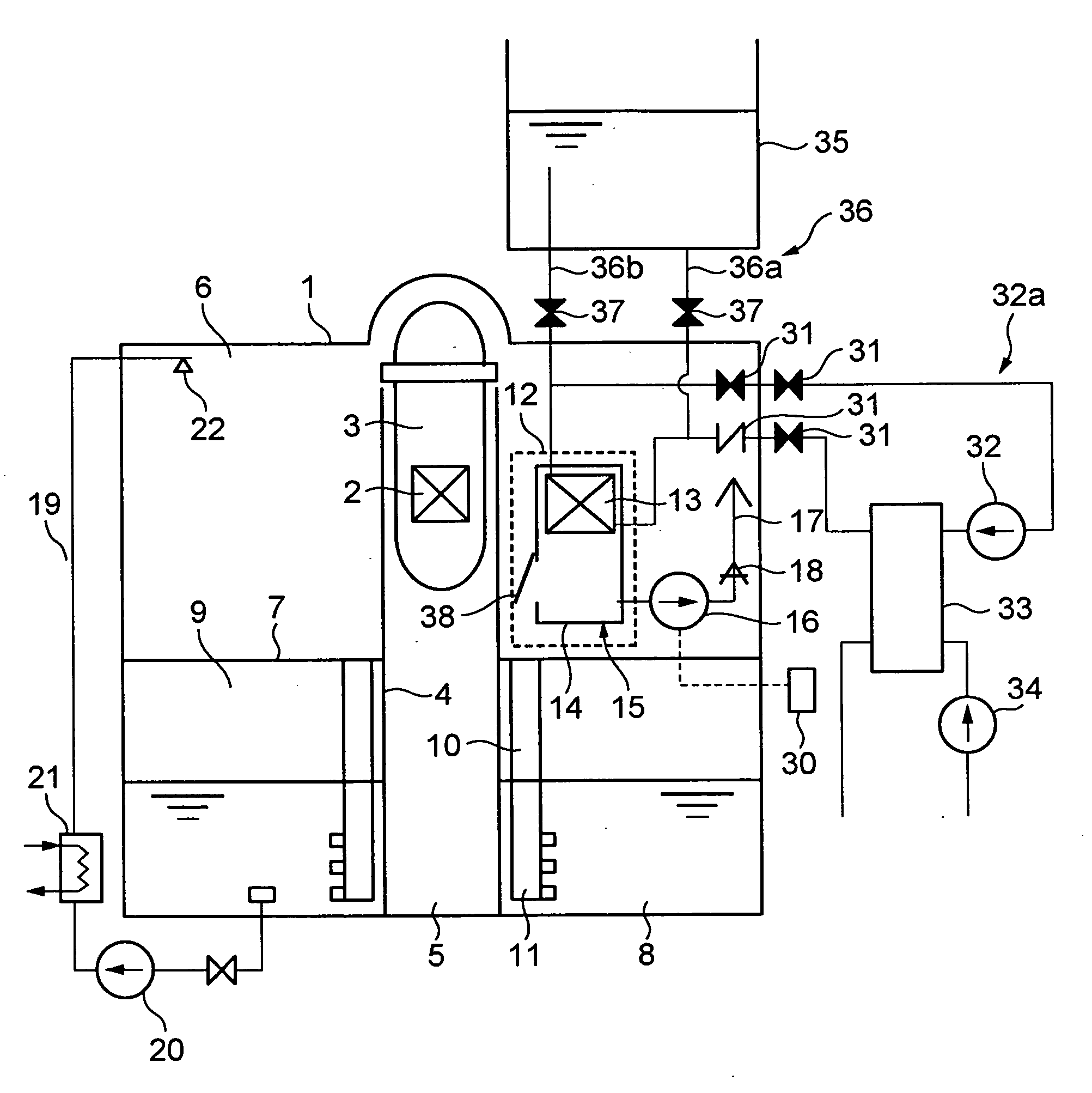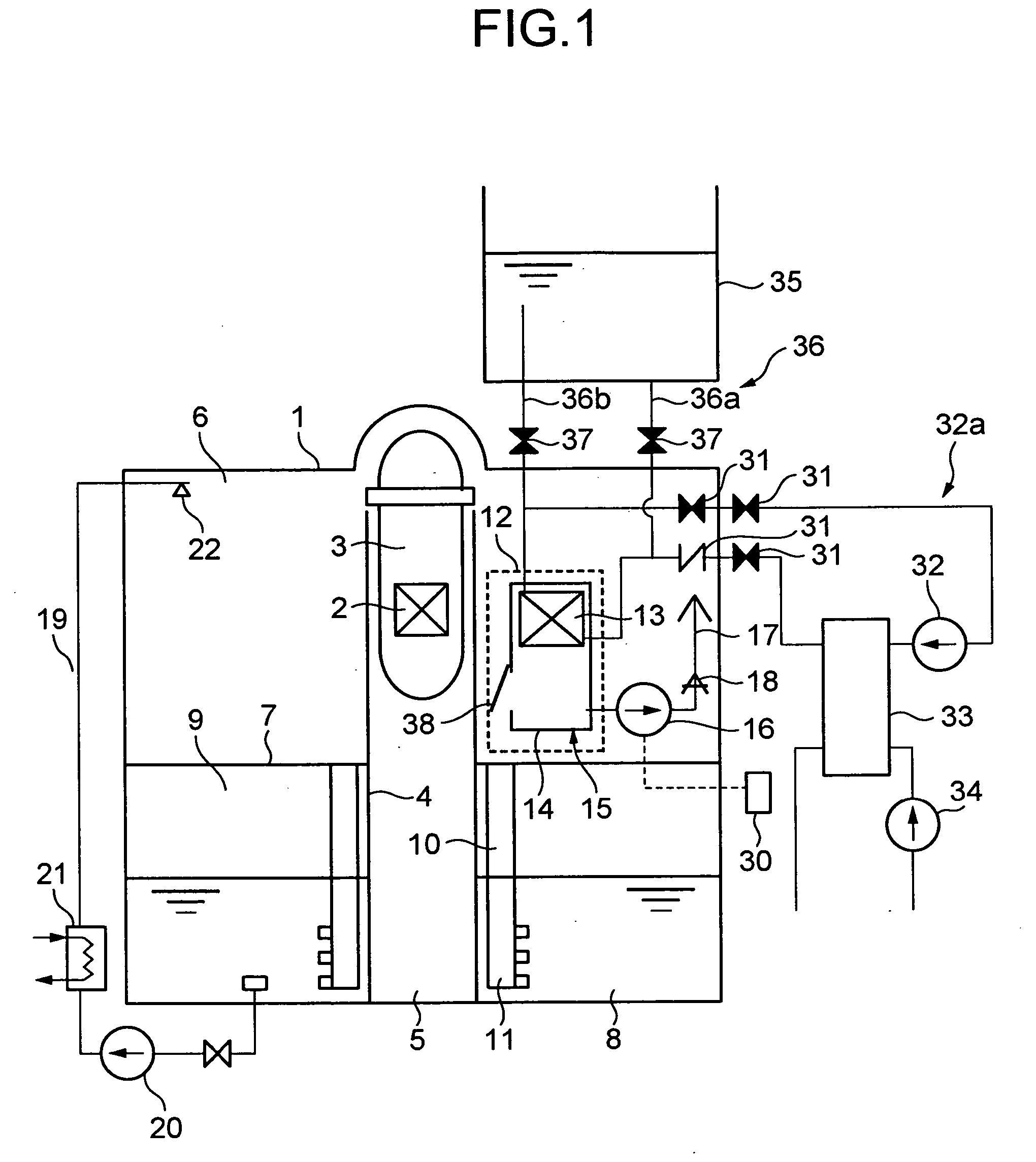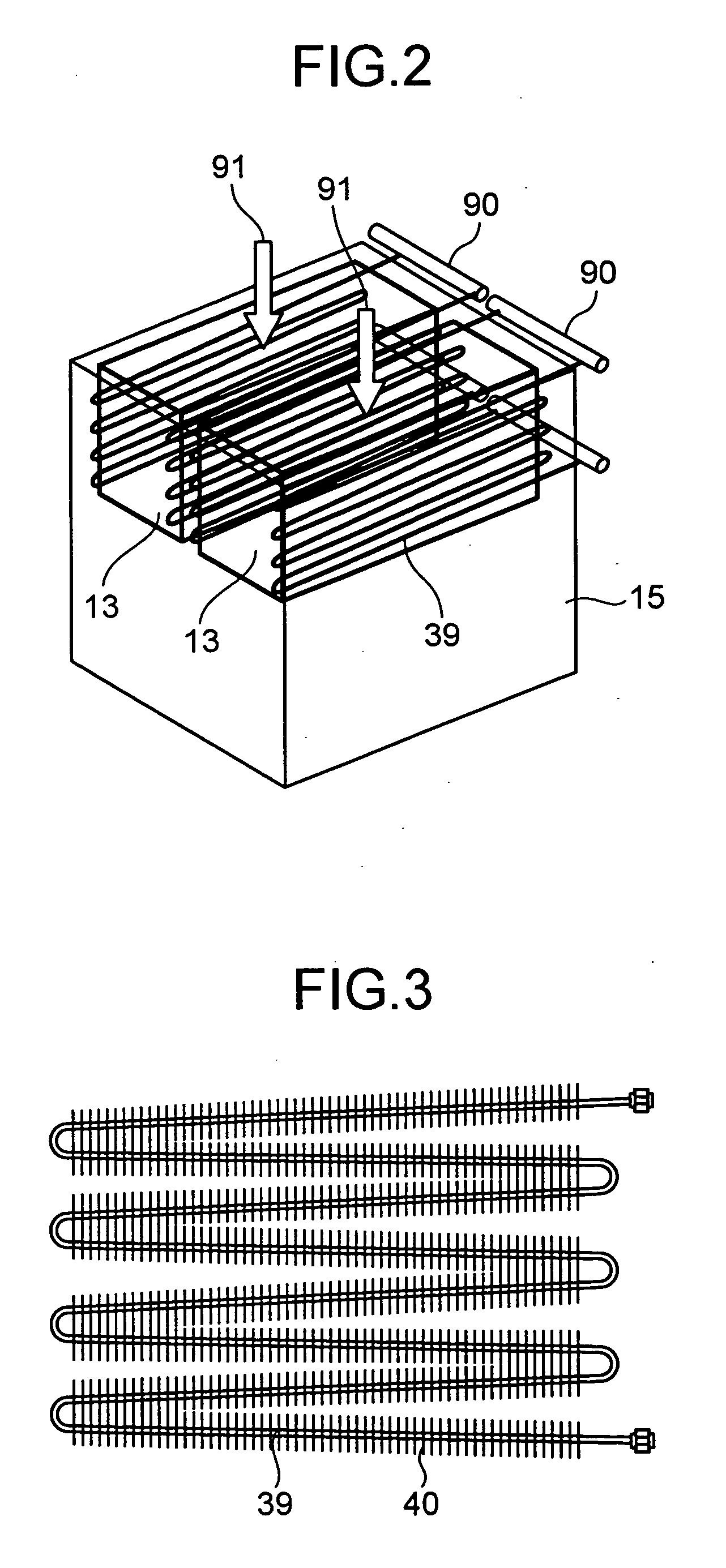Reactor containment vessel cooling equipment
a technology of containment vessel and cooling equipment, which is applied in the direction of nuclear engineering, nuclear elements, greenhouse gas reduction, etc., can solve the problems of not being able to reduce the temperature of the containment vessel, not being able to suppress satisfactorily, and the steam pressure in the containment vessel rises. achieve the effect of reducing the steam pressur
- Summary
- Abstract
- Description
- Claims
- Application Information
AI Technical Summary
Benefits of technology
Problems solved by technology
Method used
Image
Examples
embodiment 1
[0030] Firstly, the overall configuration of nuclear reactor containment vessel cooling equipment according to the invention will be summarily described by referring to FIGS. 1 through 3. FIG. 1 is a schematic elevational cross sectional view of Embodiment 1 of nuclear reactor containment vessel cooling equipment according to the present invention. As shown in FIG. 1, a nuclear reactor pressure vessel 3 is supported by a pedestal 4 in a nuclear reactor containment vessel 1. A reactor core 2 that holds nuclear fuel is contained in the nuclear reactor pressure vessel 3.
[0031] A lower dry well 5 surrounded by the pedestal 4, an upper dry well 6 surrounding the nuclear reactor pressure vessel 3 and a pressure suppression chamber 9 arranged under the upper dry well 6 and separated from the latter by a diaphragm floor 7 are arranged in the nuclear reactor containment vessel 1. The pressure suppression chamber 9 has a pressure suppression pool 8 in the inside thereof.
[0032] The upper dry...
embodiment 2
[0050] Now, Embodiment 2 of the present invention will be described below by referring to FIG. 4. The forced cooling water circulation system 32a that is activated in normal plant operation and the gravity-driven cooling system 36 that is operated in the event of a loss-of-coolant accident are provided as cooling systems for supplying cooling water to the dry well cooling unit 15. With this embodiment, the valves 31 and 37 shown in FIG. 1 are replaced by two three-way valves 45 that are arranged in the nuclear reactor containment vessel 1.
[0051] With this arrangement, it is possible to reduce the number of valves that operate as means for switching the forced cooling water circulation system 32a and the gravity-driven cooling system 36.
embodiment 3
[0052] Now, Embodiment 3 of the present invention will be described below by referring to FIG. 5. With this embodiment, the cooling coils 13 of dry well coolers 12 are arranged outside the dry well cooling casing 14.
[0053] With this arrangement, in normal operation, the gas in the dry well is sucked from an upper part of the casing 14 as indicated by arrows 50 and 51, and returned into the dry well by way of the dry well cooler casing 14, a blower 16 and a duct 17. Before the gas enters the dry well cooler casing 14 by way of aperture thereof, it passes through the area surrounding the heat transfer coil 13 and becomes cooled there.
[0054] On the other hand, when an accident occurs, the power supply is suspended and the blower 16 becomes no longer operational but the condensed water produced by the cooling coil 13 falls outside the dry well cooler casing 14. Additionally, since the cooling coil 13 is arranged outside the dry well cooler casing 14, gas contained in steam does not ac...
PUM
 Login to View More
Login to View More Abstract
Description
Claims
Application Information
 Login to View More
Login to View More - R&D
- Intellectual Property
- Life Sciences
- Materials
- Tech Scout
- Unparalleled Data Quality
- Higher Quality Content
- 60% Fewer Hallucinations
Browse by: Latest US Patents, China's latest patents, Technical Efficacy Thesaurus, Application Domain, Technology Topic, Popular Technical Reports.
© 2025 PatSnap. All rights reserved.Legal|Privacy policy|Modern Slavery Act Transparency Statement|Sitemap|About US| Contact US: help@patsnap.com



